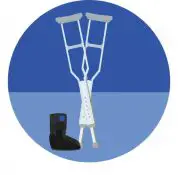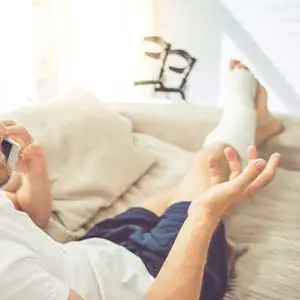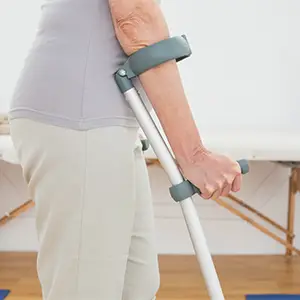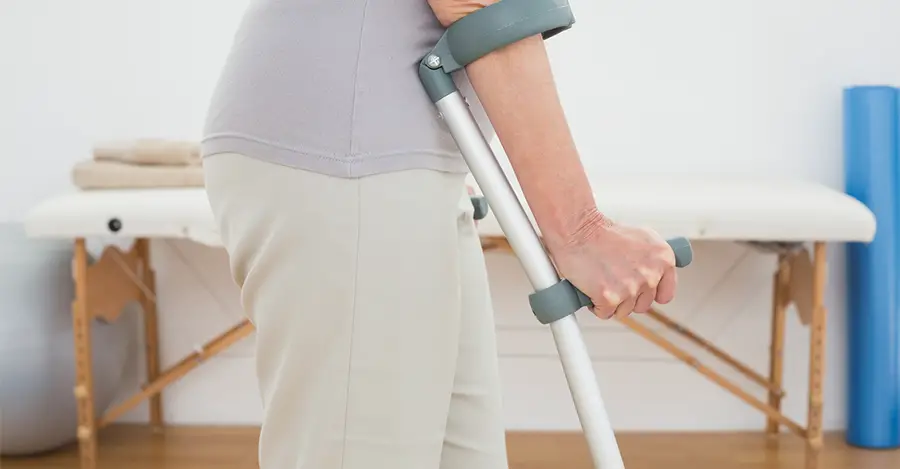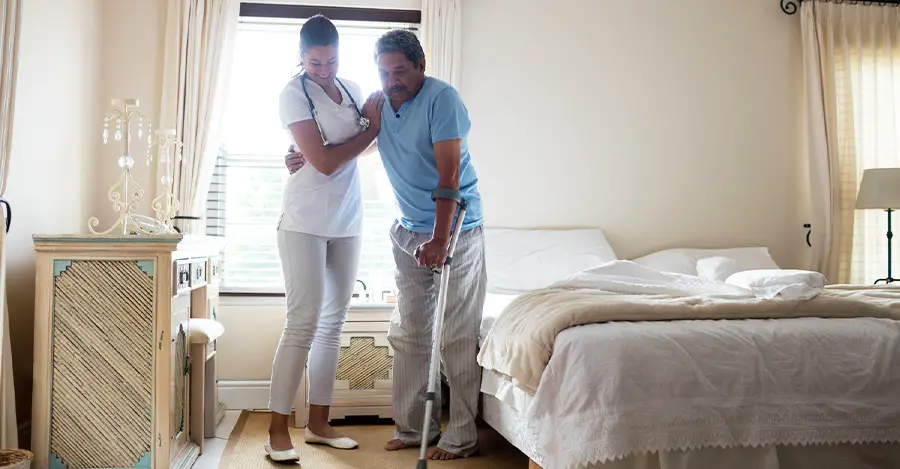How to Reduce Swelling in the Foot After Surgery?
How to Reduce Swelling After Foot Surgery
- Last Update:
Swelling is one of the most challenging aftereffects of foot surgery. This swelling can inhibit your range of motion, cause pain, and increase discomfort. Swelling can make life uncomfortable for weeks or even months.
If this happens, many things can be done at home to reduce the symptoms and learn how to manage them better.
There are several ways to reduce swelling after foot surgery. These ways will help you maintain mobility and prevent painful symptoms.
This post will cover the best ways to reduce swelling after foot surgery.
Enough Rest is Important
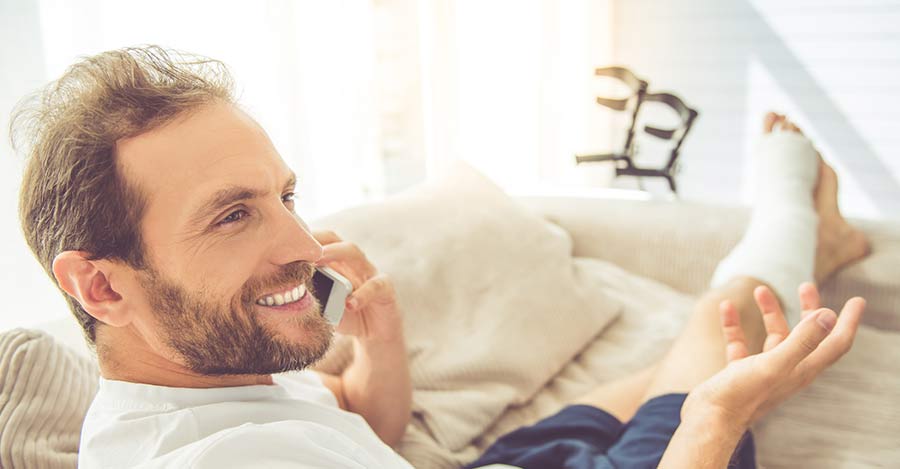
After foot surgery, it’s essential to get enough rest. This allows your body to heal and recover.
Sitting or not moving enough after foot surgery can increase swelling in your feet. Your blood flow slows, which makes symptoms worse.
Not getting enough rest can also make it challenging to do the exercises that will help the recovery later on. So don’t overdo it. Listen to what your doctor says about resting after you have surgery done. It’s a very important part of recovery from foot surgery.
Cold Therapy
Cold therapy is always used to reduce swelling after foot surgery. It is common knowledge that cold treatment can help reduce swelling.
Cold therapy also works to draw out excess fluids from the body. This can help prevent chronic cases of pain and swelling.
This is a simple home remedy you can easily do at home before bed (if possible). Wrap ice or frozen juice packets in a towel and put them inside your pajamas on the affected foot areas.
It would be best if you wrapped it up tight to reduce movement and keep it cold in your bed all night. Do not pull at the ice pack since it will cause bleeding over the affected area.
It may feel uncomfortable at first to sleep with a treated foot. However, it is essential to do so to reduce swelling.
You should keep the ice on for about 15- 20 minutes or until the area feels numb. Afterward, wrap an elastic bandage around it to keep it tight and secure.
Stand up and take pressure off of your foot for at least 30 minutes after you remove the ice pack. You can stand up and walk around a little after feeling better. You should do this once or twice a day for at least 2 weeks to find relief from swelling symptoms after surgery.
Use Compression
Compression stockings are compression garments that go from the toes to the thighs.
These stockings can help improve blood circulation. Wearing these stockings will provide a higher comfort level for longer periods. It will also help recover faster.
When you first start wearing them, it’s best to wear them during the day for about an hour or two at a time.
You can increase the time you wear them over time until you’re able to wear them 24 hours a day.
You will get the best results when you wear two pairs of stockings for at least 4 days after surgery. There may be times when you need to wear them for longer than that.
Elevate the Injury

Another great way to reduce swelling after foot surgery is to elevate your foot. This will increase blood flow and help to break down the tissue that causes the swelling.
Elevating the injury is a crucial step in reducing swelling after foot surgery. We’re often not used to taking our feet fully off the ground when we walk. This causes us to put pressure on foot and ankle joints, which can cause pain and swelling.
To relieve swelling in foot or ankle joint, elevate it as much as possible. This can be done with an elevated bed that supports your foot and ankle or sitting or standing on a stool.
While at it, be sure the rest of your leg is elevated too. This will help reduce swelling and pain in your entire lower leg.
Essential movement only and Use Mobility Device
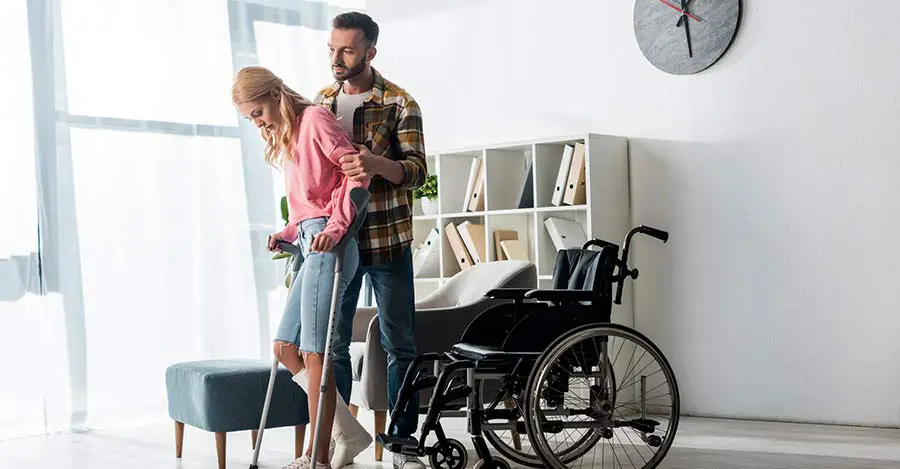
After surgery, it is essential to focus on the recovery process. Your doctor and physical therapist can help you determine when you are ready to walk around. Until then, relax and stay off your feet.
This will reduce swelling after foot surgery. This is by allowing your body to rest and recover from your procedure.
Use a mobility device like crutches to help you move safely and easily around the house or wherever you need to go.
Crutches will ensure that you keep all of your weight off of foot. This will happen while supporting yourself, making you less likely to slip and fall.
Practice with an Ambulatory Aid
Swelling may result from your body healing and adjusting to the new body part after surgery. One way to reduce swelling is to use an ambulatory aid, such as crutches or a walker. Having enough rest is essential to recovery from foot surgery.
An ambulatory aid can reduce swelling by keeping your weight off the affected area. Using an arm crutch or hand-held walker can also help you move around more comfortably as you feel better.
Medications as directed
Your doctor will probably prescribe some medication to help manage symptoms.
There are a few different classes of medication that can be used to reduce swelling. Your doctor will go over what you should expect with each type. Before using it, you should know how effective it is and whether or not it has side effects.
Your doctor often wants you to use all the recommended medications. This will try to manage the swell as quickly as possible. Otherwise, you may need to wait before taking anti-inflammatory drug or muscle relaxant.
Be sure to ask your surgeon about which medications need to be taken during your recovery.
Diet and Avoid Smoking and drinking

Another thing is to eat healthy foods and avoid smoking and drinking alcohol.
Smoking causes constriction in the blood vessels. This reduces your blood flow or oxygen supply. This, in turn, can lead to swelling.
Alcohol consumption leads to dehydration which also contributes to swelling. Drinking plenty of water is essential for reducing swelling after surgery too.
Gentle massage away from the surgical site
Water retention, passing bacteria, and excessive fluid around the body cause swelling. Massaging this area gently will help loosen the tissue and drain excess fluid. Perform a few drops at a time if needed.
An excellent way to reduce swelling is to massage the surgical site gently. This will help move fluid and blood from the surgical site and promote circulation. Massage can be done at home by yourself, or you can have a massage therapist come in.
You can also add essential oils like lavender, chamomile, or geranium to a warm compress to soften the muscles and reduce pain in your foot.
Note: Swelling that worsens after 48 hours following the procedure should be reported to your physician.
Final Word
The swelling after foot surgery is one of the most challenging and critical issues that patients will face. It can affect the range of motion, cause pain, or interfere with some activities.
It is widely believed that you can use some natural remedies to relieve swelling after foot surgery.
